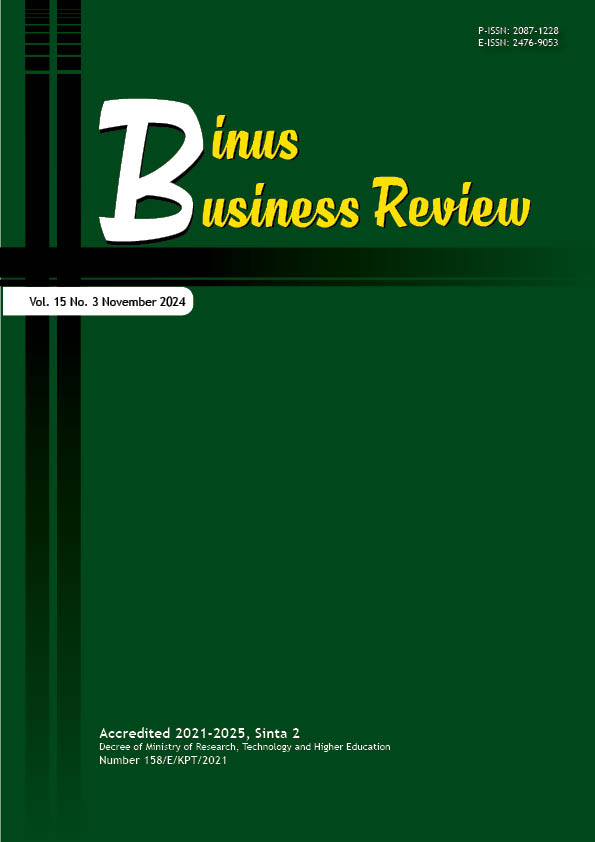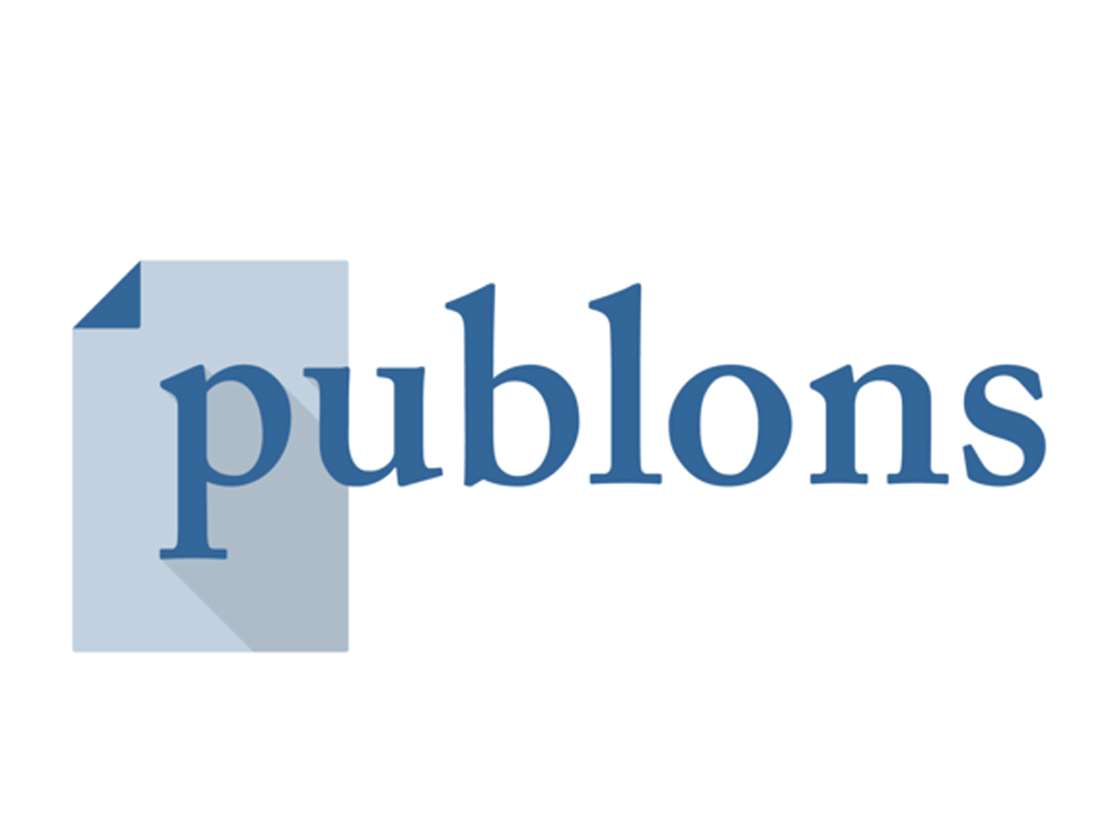An Analysis of the Relationship between Prices, Shopping Habits, Promotions, and Fashion Involvements in Impulsive Buying Decisions
DOI:
https://doi.org/10.21512/bbr.v15i3.11001Keywords:
prices, shopping habits, promotions, fashion involvements, impulsive buying decisionsAbstract
The research aimed to evaluate the direct and mediating association between impulsive buying behavior and the impact of several elements, such as costs, shopping lifestyle, promotion, and fashion engagement. Quantitative research was conducted by questionnaires to 100 participants, encompassing individuals from diverse age groups, jobs, and genders. However, only 88 questions were deemed legitimate and met the criteria for evaluation. In the interim, a total of 12 surveys were deemed unsuccessful due to their failure to fulfill the established criteria or the presence of incomplete responses provided by the participants. Researchers tested the relevance of the effect of each variable indicator that affected impulsive purchase using SmartPLS software. The findings indicate that among the factors examined, only one variable has a positive direction and a significant impact on impulsive buying through the intervening channel, as seen by a p-value of 0.010. Conversely, the remaining variables exhibit a lack of meaningful influence and display a negative direction. The result stipulates that the price is the primary criterion for individuals who make impulsive purchases to satisfy their fashion wants. These findings have the potential to address the idea that impulsive buying behavior is only determined by the intricate interplay of factors such as price, promotion, shopping lifestyle, and fashion engagement. Hence, it is necessary to employ alternative methodologies to benchmark various indicator variables to discover fresh findings on impulsive purchase attitudes on digital platforms in the modern day.
References
Agarwal, M. K., Ma, Z., Park, C. H., & Zheng, Y. (2022). The impact of a manufacturer’s financial liquidity on its market strategies and pricing and promotion decisions in retail grocery markets. Journal of Business Research, 142, 844–857. https://doi.org/10.1016/j.jbusres.2022.01.022
Aka, D. O., Kehinde, O. J., & Ogunnaike, O. O. (2016). Relationship marketing and customer satisfaction: A conceptual perspective. Binus Business Review, 7(2), 185–190. https://doi.org/10.21512/bbr.v7i2.1502
Ammad, S., Alaloul, W. S., Saad, S., & Qureshi, A. H. (2021). Personal Protective Equipment (PPE) usage in construction projects: A systematic review and smart PLS approach. Ain Shams Engineering Journal, 12(4), 3495–3507. https://doi.org/10.1016/j.asej.2021.04.001
Aprianingsih, A., Fachira, I., Setiawan, M., Debby, T., Desiana, N., & Lathifan, S. A. N. (2023). Slow fashion purchase intention drivers: An Indonesian study. Journal of Fashion Marketing and Management, 27(4), 632–647. https://doi.org/10.1108/JFMM-07-2021-0176
Aragoncillo, L., & Orus, C. (2018). Impulse buying behaviour: An online-offline comparative and the impact of social media. Spanish Journal of Marketing - ESIC, 22(1), 42–62. https://doi.org/10.1108/SJME-03-2018-007
Bandalos, D. L. (2002). The effects of item parceling on goodness-of-fit and parameter estimate bias in structural equation modeling. Structural Equation Modeling: A Multidisciplinary Journal, 9(1), 78–102. https://doi.org/10.1207/S15328007SEM0901_5
Chan, T. K. H., Cheung, C. M. K., & Lee, Z. W. Y. (2017). The state of online impulse-buying research: A literature analysis. Information & Management, 54(2), 204–217. https://doi.org/10.1016/j.im.2016.06.001
Chatterjee, S., Sreen, N., Rana, J., Dhir, A., & Sadarangani, P. H. (2022). Impact of ethical certifications and product involvement on consumers decision to purchase ethical products at price premiums in an emerging market context. International Review on Public and Nonprofit Marketing, 19, 737–762. https://doi.org/10.1007/s12208-021-00288-1
Dewanti, R., Chu, T. F., & Wibisono, S. (2011). The influence of experiential marketing, emotional branding, brand trust towards brand loyalty. Binus Business Review, 2(2), 1109–1117. https://doi.org/10.21512/bbr.v2i2.1253
Edelia, A., & Anggraini, T. (2022). The effect of hedonic shopping motivation, shopping lifestyle, and fashion involvement on impulse buying on Zalora customers in Medan City. Daengku: Journal of Humanities and Social Sciences Innovation, 2(4), 559–566. https://doi.org/10.35877/454RI.daengku1113
Fornell, C., & Larcker, D. F. (1981). Evaluating structural equation models with unobservable variables and measurement error. Journal of Marketing Research, 18(1), 39–50. https://doi.org/10.2307/3151312
Hair Jr, J. F., Sarstedt, M., Hopkins, L., & Kuppelwieser, V. G. (2014). Partial Least Squares Structural Equation Modeling (PLS-SEM): An emerging tool in business research. European Business Review, 26(2), 106–121. https://doi.org/10.1108/EBR-10-2013-0128
Hair, J. F., Hult, G. T. M., Ringle, C. M., & Sarstedt, M. (2017). A primer on Partial Least Squares Structural Equation Modeling (PLS-SEM). Sage Publications Inc.
Hasan, M., Arisah, N., & Rahmatullah. (2021). Literasi ekonomi dan pola perilaku konsumsi masyarakat kelas menengah ke bawah di era adaptasi kebiasaan baru. Organum: Jurnal Saintifik Manajemen dan Akuntansi, 4(2), 158–174. https://doi.org/10.35138/organum.v4i2.186
Hosseini, S. H., Zadeh, F. H., Shafiee, M. M., & Hajipour, E. (2020). The effect of price promotions on impulse buying: The mediating role of service innovation in fast moving consumer goods. International Journal of Business Information Systems, 33(3), 320–336. https://doi.org/10.1504/IJBIS.2020.10027452
Husnain, M., Rehman, B., Syed, F., & Akhtar, M. W. (2019). Personal and in-store factors influencing impulse buying behavior among Generation Y consumers of small cities. Business Perspectives and Research, 7(1), 92–107. https://doi.org/10.1177/2278533718800625
Iyer, G. R., Blut, M., Xiao, S. H., & Grewal, D. (2020). Impulse buying: A meta-analytic review. Journal of the Academy of Marketing Science, 48, 384–404. https://doi.org/10.1007/s11747-019-00670-w
Jaller, M., & Pahwa, A. (2020). Evaluating the environmental impacts of online shopping: A behavioral and transportation approach. Transportation Research Part D: Transport and Environment, 80. https://doi.org/10.1016/j.trd.2020.102223
Japutra, A., Ekinci, Y., & Simkin, L. (2019). Selfcongruence, brand attachment and compulsive buying. Journal of Business Research, 99, 456–463. https://doi.org/10.1016/j.jbusres.2017.08.024
Karl, M., Chien, P. M., & Ong, F. (2021). Impulse buying behaviour in tourism: A new perspective. Annals of Tourism Research, 90. https://doi.org/10.1016/j.annals.2020.103136
Kursan Milaković, I., & Ahmad, A. (2023). Online impulse buying and cognitive appraisal theory: Two countries comparison. International Journal of Retail & Distribution Management, 51(12), 1637–1655. https://doi.org/10.1108/IJRDM-03-2023-0150
Lee, Y. Y., Gan, C. L., & Liew, T. W. (2023). Rationality and impulse buying: Is your emotion a part of the equation? Computers in Human Behavior Reports, 12, 1–11. https://doi.org/10.1016/j.chbr.2023.100337
Lefley, F., Trnková, G., & Vychová, H. (2024). Gender diversity on corporate boards: Importance of female traits/characteristics as perceived by university students. Corporate Communications: An International Journal, 29(2), 152–169. https://doi.org/10.1108/CCIJ-09-2023-0128
Li, Z., Yada, K., & Zennyo, Y. (2021). Duration of price promotion and product profit: An in-depth study based on point-of-sale data. Journal of Retailing and Consumer Services, 58. https://doi.org/10.1016/j.jretconser.2020.102277
Maitsa, S. M., & Artadita, S. (2022). The effect of sales promotion towards impulse buying with lifestyle as an intervening variable during the COVID-19 pandemic. Almana: Jurnal Manajemen dan Bisnis, 6(2), 240–248. https://doi.org/10.36555/almana.v6i2.1797
Mandolfo, M., Bettiga, D., Lamberti, L., & Noci, G. (2022). Influence of sales promotion on impulse buying: A dual process approach. Journal of Promotion Management, 28(8), 1212–1234. https://doi.org/10.1080/10496491.2022.2060415
Muis, I. (2020). Marketing strategy and capability as the mediators in relationship of market orientation and export performance: A case study of rattan processing SMEs. Binus Business Review, 11(1), 31–42. https://doi.org/10.21512/bbr.v11i1.5964
Nghia, H. T., Olsen, S. O., & Trang, N. T. M. (2022). A dual process on shopping well-being across shopping contexts: The role of shopping values and impulse buying. Asia Pacific Journal of Marketing and Logistics, 34(3), 594–610. https://doi.org/10.1108/APJML-09-2020-0668
Nyrhinen, J., Sirola, A., Koskelainen, T., Munnukka, J., & Wilska, T. A. (2024). Online antecedents for young consumers’ impulse buying behavior. Computers in Human Behavior, 153, 1–9. https://doi.org/10.1016/j.chb.2023.108129
Obukhovich, S., Sipilä, J., & Tarkiainen, A. (2023). Strategies for reducing the environmental impact of impulse buying. In Sustainable marketing, branding, and reputation management: Strategies for a greener future (pp. 195–211). IGI Global. https://doi.org/10.4018/979-8-3693-0019-0.ch010
Poell, T., & Van Dijck, J. (2018). Social Media and New Protest Movements. In The SAGE handbook of social media (pp. 546–561). SAGE Publications Ltd. https://doi.org/10.4135/9781473984066.n31
Putri, V. P. (2020). Shopping lifestyle as mediating between hedonic shopping on impulse buying online at marketplace. Manajemen Bisnis, 10(2), 1–8. https://doi.org/10.22219/jmb.v10i2.14496
Richardson, T., Egglishaw, A., & Sood, M. (2024). Does childhood trauma predict impulsive spending in later life? An analysis of the mediating roles of impulsivity and emotion regulation. Journal of Child & Adolescent Trauma, 17, 275–281. https://doi.org/10.1007/s40653-023-00600-7
Rodrigues, R. I., Lopes, P., & Varela, M. (2021). Factors affecting impulse buying behavior of consumers. Frontiers in Psychology, 12, 1–3. https://doi.org/10.3389/fpsyg.2021.697080
Samaddar, K., Mondal, S., & Gandhi, A. (2024). Online counterfeit purchase behaviour: Moderating effect of perceived anonymity and moral disengagement. Young Consumers, 25(1), 84–108. https://doi.org/10.1108/YC-10-2022-1621
Senanu, B., Anning-Dorson, T., & Tackie, N. N. (2023). Social media insights for non-luxury fashion SMEs in emerging markets: Evidence from young consumers. Journal of Fashion Marketing and Management, 27(6), 965–987. https://doi.org/10.1108/JFMM-02-2022-0026
Sharma, V. M., Dave, D. S., Aggarwal, A. K., & Sharma, K. S. (2023). Mitigation of high consequence supply chain disruptive effects on stores and consumers. International Journal of Logistics Systems and Management, 45(3), 397–413. https://doi.org/10.1504/IJLSM.2023.132989
Simbolon, F. P., & Law, V. (2022). Social media marketing through Instagram and repurchase intention: The mediating role of customer engagement. Binus Business Review, 13(3), 223–232. https://doi.org/10.21512/bbr.v13i3.8576
Simbolon, F. P., Nurcholifa, R. A., & Safarina, M. (2022). The influence of using Instagram as a promotional media in building brand awareness and its impact on purchase decision of Bulog products in Shopee. Binus Business Review, 13(1), 57–66. https://doi.org/10.21512/bbr.v13i1.7917
Singh, P., Sharma, B. K., Arora, L., & Bhatt, V. (2023). Measuring social media impact on impulse buying behavior. Cogent Business & Management, 10(3). https://doi.org/10.1080/23311975.2023.2262371
Tirtayasa, S., Nevianda, M., & Syahrial, H. (2020). The effect of hedonic shopping motivation, shopping lifestyle and fashion involvement with impulse buying. International Journal of Business Economics (IJBE), 2(1), 18–28. https://doi.org/10.30596/ijbe.v2i1.5715
Van Tran, D., Nguyen, T., & Nguyen, D. M. (2023). Understanding how upward social comparison stimulates impulse buying on image-sharing social commerce platforms: A moderated mediation model of Benign envy and self-esteem. Current Psychology, 42, 18777–18792. https://doi.org/10.1007/s12144-022-03042-w
Vieira, V., Santini, F. O., & Araujo, C. F. (2018). A metaanalytic review of hedonic and utilitarian shopping values. Journal of Consumer Marketing, 35(4), 426–437. https://doi.org/10.1108/JCM-08-2016-1914
Wijaya, O. Y. A., & Ardyan, E. (2018). The influencing factors of impulsive buying behaviour in Transmart Carrefour Sidoarjo. Binus Business Review, 9(3), 199–205. https://doi.org/10.21512/bbr.v9i3.4729
Yang, W., Si, Y., Wang, D., & Zhang, G. (2020). A novel method for identifying electrocardiograms using an independent component analysis and principal component analysis network. Measurement, 152. https://doi.org/10.1016/j.measurement.2019.107363
Zhou, Y., Li, Y. Q., Ruan, W. Q., & Zhang, S. N. (2023). Owned media or earned media? The influence of social media types on impulse buying intention in Internet celebrity restaurants. International Journal of Hospitality Management, 111. https://doi.org/10.1016/j.ijhm.2023.103487
Downloads
Published
How to Cite
Issue
Section
License
Copyright (c) 2024 Tibrani, Shafie Mohamed Zabri, Lukmanul Hakim

This work is licensed under a Creative Commons Attribution-ShareAlike 4.0 International License.
Authors who publish with this journal agree to the following terms:
a. Authors retain copyright and grant the journal right of first publication with the work simultaneously licensed under a Creative Commons Attribution License - Share Alike that allows others to share the work with an acknowledgment of the work's authorship and initial publication in this journal.
b. Authors are able to enter into separate, additional contractual arrangements for the non-exclusive distribution of the journal's published version of the work (e.g., post it to an institutional repository or publish it in a book), with an acknowledgment of its initial publication in this journal.
c. Authors are permitted and encouraged to post their work online (e.g., in institutional repositories or on their website) prior to and during the submission process, as it can lead to productive exchanges, as well as earlier and greater citation of published work.
USER RIGHTS
All articles published Open Access will be immediately and permanently free for everyone to read and download. We are continuously working with our author communities to select the best choice of license options, currently being defined for this journal as follows: Creative Commons Attribution-Share Alike (CC BY-SA)



























